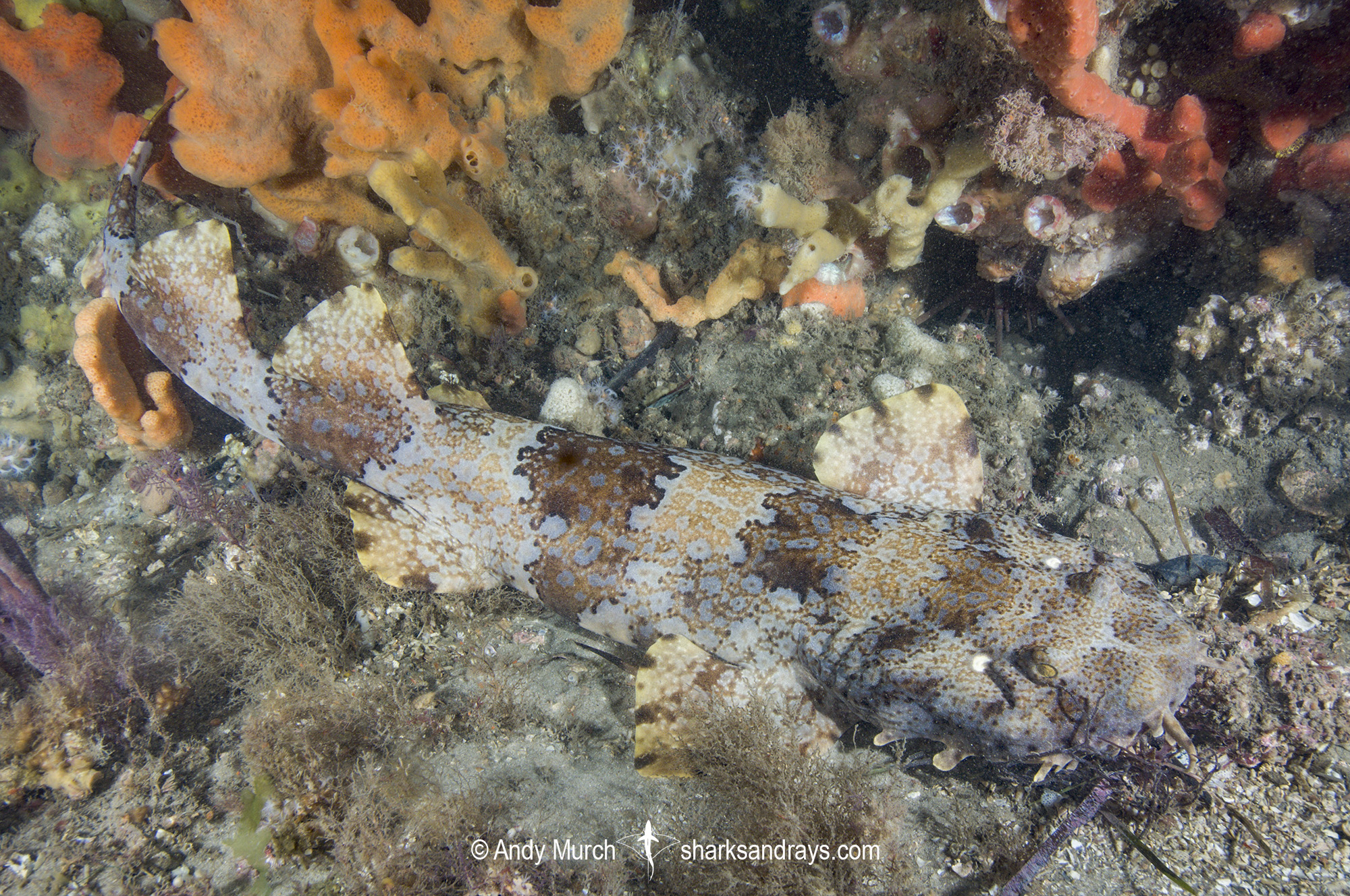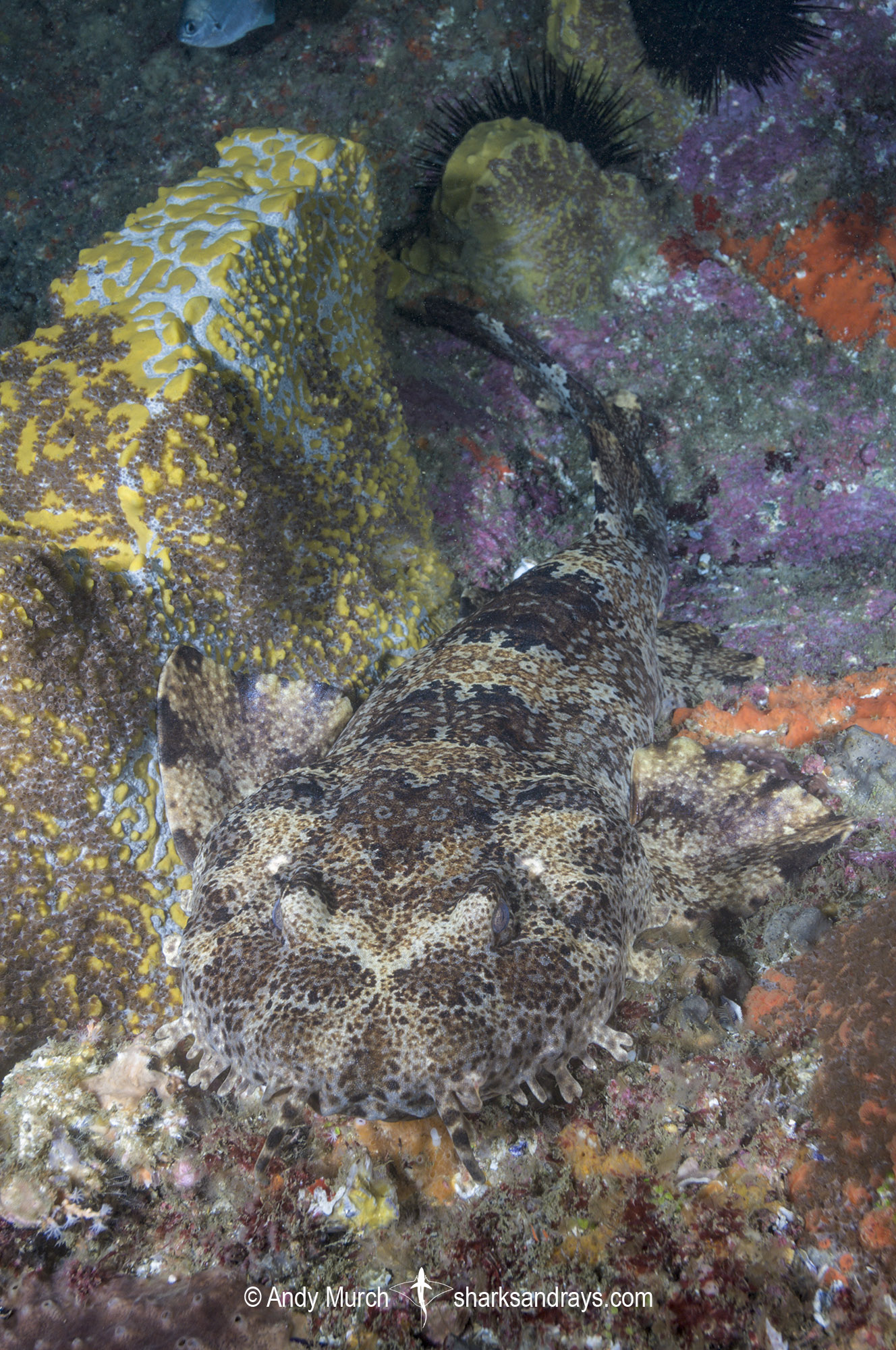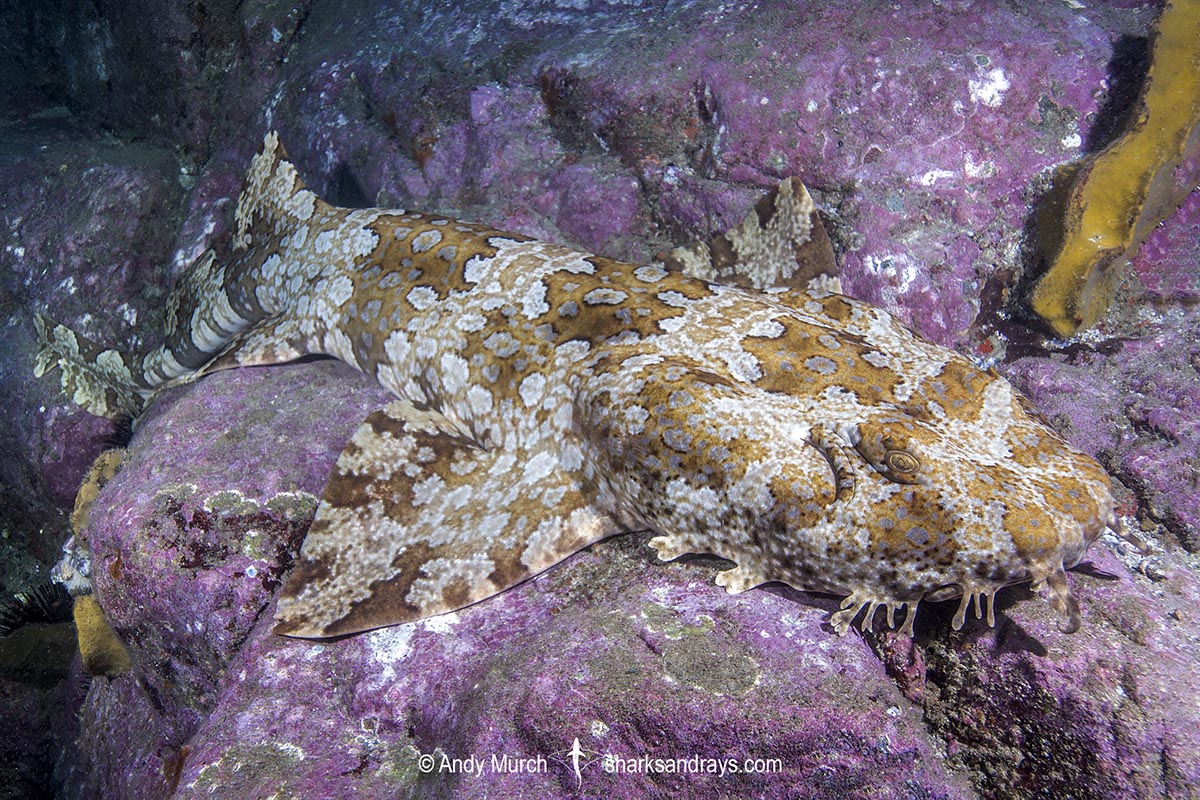Common names
Ornate Wobbegong, Dwarf Ornate Wobbegong.
Binomial
Orectolobus ornatus.
Synonyms
Crossorhinus ornatus, Orectolobus devisi.
Identification
A small species of wobbegong with four groups of dermal lobes (skin flaps) below and in front of eyes on each side of head; no dermal lobes on chin; nasal barbel (closest to mouth) long and branched; three (rarely four) lobes in second preorbital group with outer lobes longer and branched; broad unbranched, spatulate post-spiracular lobes.
Two equally sized, large dorsal fins. First dorsal origin over pelvic fin insertion.
No warty tubercles on head or body. Body covered in an intricate pattern dominated by eight dark saddles edged with black lines. Saddles stand out against a light tan or grey background. Light brown and gray freckle-like blotches on and between saddles and on pectoral fins. Convergence of dark markings often leaves a light coloured V or X shape in front of eyes.
Note, previously thought to be the juvenile form of the species which was assumed to grow much bigger. Recent studies have shown that the larger morph is actually a distinct species now referred to as the Banded Wobbegong (Orectolobus halei).
Size
Maximum length 110cm. Size at birth approximately 20cm.

Conservation Status
LEAST CONCERN
The Ornate Wobbegong (Orectolobus ornatus) was a target species in eastern Australia until 2008 when a minimum catch size limit of 180 cm for wobbegongs was implemented; effectively protectthis small species which grows to a maximum length of 120cm.

Habitat
Sub-temperate and tropical seas. The ornate wobbegong prefers areas with high topographic complexity and crevice volume on rocky and coral reefs, in kelp stands, and in sponge gardens. It can be found in bays, lagoons, on reef flats and faces, and around offshore islands. From the intertidal zone down to at least 100m.
Distribution
The ornate wobbegong is probably confined to eastern Australia (Whitsunday Islands southward to Sydney) but may also be present in Indonesia and PNG.
I noticed a very similar looking wobbegong in Triton Bay on the south side of West Papua. At the time of writing (January 2020) DNA sampled are being processed.
Reproduction
Ovoviparous and probably lecithotrophic, i.e. the foetus is solely nourished by the yolk within the egg case. 4-18 pups per litter. Gestation 10-11 months. Triennial reproductive cycle
Diet
Feeds on small bony fishes, elasmobranchs, cephalopods, and crustaceans.
Wobbegongs are ambush predators that remain motionless while camouflaged against the reef. When an appropriately sized fish swims in front of its disguised mouth, the wobbegong lunges forward simultaneously stretching its mouth open. The process sucks water and fish into its mouth, which immediately snaps shut again, trapping its prey with needle-like teeth.
Behavior
Nocturnal. Rests by day under reef ledges or in caves. Relocates at night when hunting but often returns at dawn to the same resting spot. In Nelson Bay an ornate wobbegong was re-sighted within a 75 hectare area for a period of over 211 days (Carraro and Gladstone 2006) suggesting a great degree of site fidelity.
Reaction to divers
Very easy to approach. Remains at rest, relying on camouflage unless harassed.
CAUTION: Wobbegongs have been reported to have bitten divers that got too close to their mouths, even when not disturbed.
Diving logistics
The ornate wobbegong is a commonly encountered species in New South Wales. One of the best spots is Fish Rock near the town of Southwest Rocks. Spotted and banded wobbies are more common at this location but I have seen ornate wobbegongs resting in the shallows on top of the pinnacle.
Byron Bay is also a good spot to encounter this species.
Further south in Nelson Bay, I seen a lot of ornate wobbegongs, lounging on sponges. This makes the latter a good spot for colourful images when the visibility is good.
What’s new
View our full list of updates
Similar species
Banded/Gulf Wobbegong Once thought to be the adult form of the ornate wobbegong. Distinguished by much larger size and similar but less intricate markings.
Papuan Wobbegong a very similar looking wobbegong found in West Papua and PNG. At the time of writing (January 2020) DNA sampled are being processed to establish whether these two species are distinct or regional variants of eachother.








